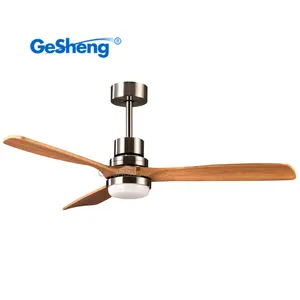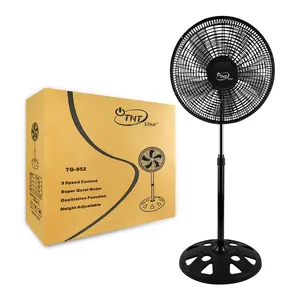In an increasingly competitive marketplace, businesses are constantly seeking innovative ways to maintain comfortable and productive environments. A stand fan is a versatile and efficient solution for climate control within various settings. This adjustable air-circulating device has become a staple for commercial and residential spaces alike, offering a blend of functionality and ease of use that appeals to a broad range of B2B customers. Understanding the diverse types, features, and applications of stand fans provides valuable insight into their role in maintaining an agreeable atmosphere.
Types of stand fans
Stand fans, also known as pedestal fans, come in an array of designs to cater to different preferences and needs. The traditional floor fan is a common sight in many settings, appreciated for its straightforward functionality and ease of placement. For those seeking more advanced options, the pedestal fan with remote offers the convenience of operation without the need to manually adjust settings. In environments where noise levels are a concern, the quiet standing fan has been designed to deliver airflow without disruptive sounds, making it an ideal choice for office spaces or areas requiring minimal noise. The commercial pedestal fan is built for durability and performance, capable of delivering powerful air circulation in larger spaces such as warehouses or outdoor venues. Furthermore, the 18 inch floor fan is a specific size that offers a balance between portability and power, making it a popular choice among various users.
Features of stand fans
Stand fans boast an impressive variety of features that contribute to their appeal. One defining characteristic is the adjustable height, which allows the stand fan to be modified to direct airflow precisely where it is needed. Additionally, oscillation is a common feature that enables the fan to rotate, distributing air across a wider area for more effective cooling. Many models now come with multiple speed settings, giving users the ability to control the intensity of the breeze produced by the floor standing fan. For added convenience, some stand fans include timers, allowing them to be programmed to operate for specific periods. The incorporation of remotes in pedestal fans with remote enhances user-friendliness, as it enables control from a distance, a feature particularly valued in situations where the fan is placed in hard-to-reach locations.
Applications of stand fans
The practicality of stand fans extends to a multitude of applications, highlighting their adaptability to different environments. One common use is in residential settings, where a free standing fan can provide a cost-effective way to cool a room without the need for expensive air conditioning systems. In commercial spaces, a quiet standing fan can offer a soothing breeze that does not interrupt work activities or customer interactions. Commercial pedestal fans are frequently found in industrial settings, where they help regulate temperature and air quality, keeping spaces comfortable for workers and machinery. Event planners often choose floor standing fans to ensure guest comfort during outdoor events or in venues lacking built-in cooling systems. The versatility of stand fans makes them a valuable asset across numerous sectors, demonstrating their importance in creating pleasant and inviting atmospheres.
Stand fans are a vital tool for businesses looking to enhance the comfort of their premises. They come in various types, each with distinctive features that make them suitable for a wide range of applications. From the standard floor fan to the more sophisticated pedestal fan with remote, these devices offer practical solutions to air circulation needs. Whether it is a quiet standing fan for a peaceful office environment or a robust commercial pedestal fan for larger spaces, the stand fan category offers a solution tailored to every need.












































 浙公网安备 33010002000092号
浙公网安备 33010002000092号 浙B2-20120091-4
浙B2-20120091-4